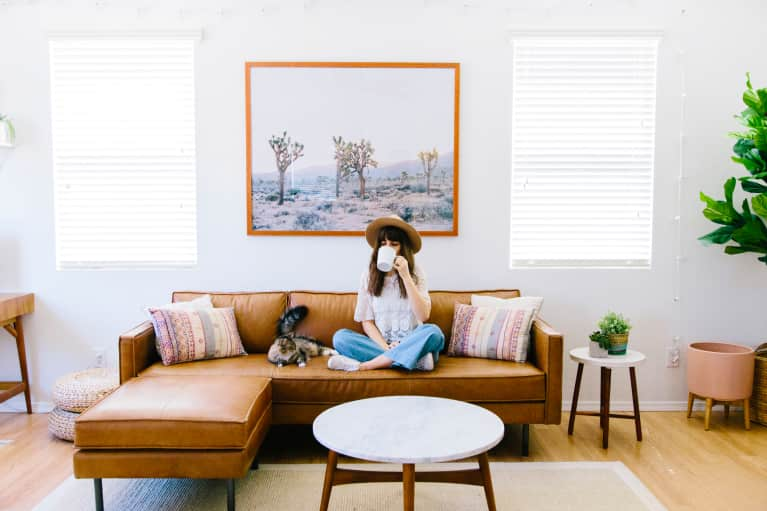
It’s a common conundrum: She likes rustic neutrals; he likes modern brights; one roommate leans more formal, and one can’t get enough cabin chic. But having two very different takes on what makes a home “beautiful” or “welcoming” doesn’t mean that two people can never be content in cohabitation. When you’re sharing a home with others, crafting a space that is inviting and comforting for all parties can do wonders in boosting happiness and decreasing stress.
I’m no therapist, but in my work as a lifestyle writer and style director for Joss & Main, I’ve come across many a pair who have vastly differing tastes in home décor. Coming to a consensus, I’ve found, is less about finding that elusive “blend” of perfect pieces that marries two wildly different décor styles and more about understanding what each person wants out of their home and bringing it to life. To that end, here are some rules of thumb I live by when helping two people create a space they both adore:
1. Think beyond “style.”
Consider that your differences may be less about what looks you each like and more about your conflicting approaches to decorating. Your “bohemian” roommate, for example, may simply be freewheeling and impulsive in her purchases, while the “traditional” person in the home may simply be more cost-driven and concerned about their purchases standing the test of time.
2. Don’t assume you understand each other’s tastes. Talk and listen.
Try this helpful exercise: Pull five images from magazines or the web that you like, and show them to your roommate. Ask him or her to do the same. Do not simply hand over your pictures to the other person; it’s too easy for the recipient to reject a look in its entirety without considering the good parts. Instead, narrate what features you like about each room in each picture. Press the other person to find one or two features in the space that they like as well. The goal is not to emphasize your differences but to find your common ground.
3. Be a salad, not a smoothie.
Oftentimes, I’ll see couples and roommates go shopping together and end up choosing a bland mix of pieces that are boring enough to not offend either party. An attractively blended interior can be more like a salad than a smoothie. That is, there are many different components, not one homogeneous mix, and the individual flavors are discernible. Sure, seek out items that both of you agree upon, but don’t be afraid to let one piece go a little funkier than you’re comfortable with and another be more traditional than your partner might choose. Which brings me to…
4. Try not to get stuck on single pieces.
It’s too easy to say, “No way, I hate that” to another person’s tastes. If there’s a piece that one person owns or is adamant about buying, consider that it’s going to be only one of the elements in the room. As long as you’re not talking about a fuchsia rug or leopard-print curtains, most pieces can be balanced out by others. The sum is greater than any one part.
5. Use room mockups.
The “what” and “how” of room mockups is a big part of my book, Your Home, Your Style, but the basic gist is this: Having an electronic or paper version of your room where you can play around with your ideas and choices can take the urgency and anxiety out of buying furniture and décor—especially if there are two decision-makers involved. If one person proposes a purchase that makes the other one nervous, placing it in a mock-up to make sure it works with the other pieces in the room plan can save time, stress, and money. And isn’t that something everyone can agree on?
source:-.mindbodygreen.c


